This is a rudimentary translation of articles from my book “Goddess Culture in Israel“. While it is far from ideal, it serves a purpose given the significance of the topic and the distinctiveness of the information contained. I have chosen to publish it in its current state, with the hope that a more refined translation will be available in the future.
Israel’s Megalithic Network
Israel is a region where the Goddess culture initially emerged and the agricultural revolution took root, leading to the natural development of a Megalithic network of sacred sites. References in the Bible to stone worship and traditions surrounding holy stones, such as the Foundation Stone in the Dome of the Rock, can be traced back to the Megalithic tradition. This raises questions: Why were the Megaliths constructed? Who were their builders? And what characteristics do they share?
These questions about Megaliths are not unique to one location but are asked globally. Indeed, they have been raised in various contexts, yet no one has offered a comprehensive overview of the phenomenon, and there is no agreement on why they were erected. The explanations for how they were constructed are also lacking in detail, and until the publication of this book, there hasn’t been an adequate exploration of alternative theories regarding them.
Generally speaking, Israel’s Megaliths were constructed during the third and final stage of the Goddess culture (the Chalcolithic period), coinciding with the building of similar Megaliths around the world. Their construction and usage extended into the dawn of history (the Early Bronze Age). Michael Freikman suggests that the Megaliths predate what other researchers have proposed, demonstrating that their arrangement mirrors that of settlements at the close of the Chalcolithic period. Hence, he deduces that the villagers from the Chalcolithic era were the builders of the Megaliths, integrating them into their religious practices.
Based on his analysis, Freikman views the Megaliths as part of a broader landscape, integrating both natural and human-made elements: “A Megalithic structure is considered within a larger landscape system, encompassing both the natural surroundings and constructed elements.” If the Megaliths indeed mirror the landscape, then their collective placement should correspond to the country’s geography. It’s evident that the Megaliths’ builders were local inhabitants or that people journeyed to these sacred sites, but the question arises whether there was a coordinated plan covering the entire country. For instance, is it possible that priests or priestesses from the Ein Gedi Temple traversed the nation, wielding measuring rods, directing the construction of structures here and there? This could have been driven by an understanding and sensitivity to the earth’s energies, with the aim of generating a life-sustaining energy field to promote prosperity for all.
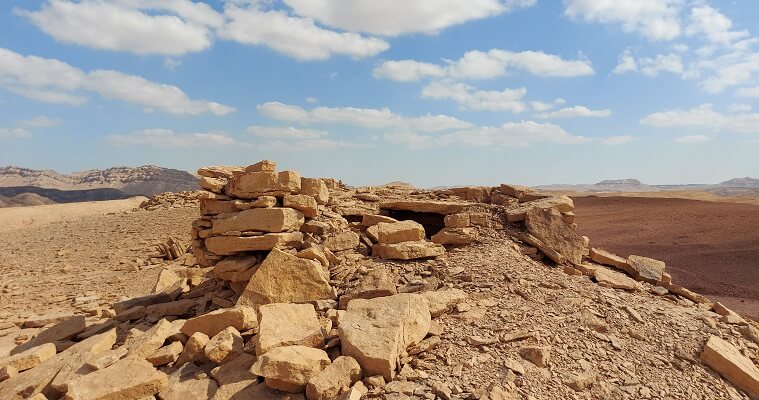
While it may resemble a plot from science fiction, this concept closely mirrors the rationale behind the construction of temples in ancient Egypt. The Egyptians held a belief that their country represented a colossal human figure, a notion encapsulated in the myth of the god Osiris, whose body was torn apart and its pieces dispersed across the land. Consequently, temples were erected on these sites corresponding to the body parts of Osiris: a temple for stability where his leg was believed to have fallen, a temple for morality at the site associated with his kidneys, and a temple for the afterlife where his heart was thought to be, among others. This led to the creation of a nationwide network of temples, each interconnected and collectively forming a massive, human-like figure across Egypt.
Additionally, from a philosophical standpoint, ancient Egypt was perceived as a manifestation and emulation of the heavens, leading to the strategic placement of temples, pyramids, and sacred sites to mirror the celestial map. All these structures adhered to sacred proportions that mirrored the Earth’s dimensions, overseen by priests emanating from central hubs of knowledge and initiation, such as Memphis or Heliopolis. The overarching aim was to cultivate a life-enhancing energy field across Egypt, which was indeed achieved. The Megalithic sites in Israel and elsewhere around the globe, constructed about a thousand or two thousand years prior to the rise of ancient Egypt, might have inspired or even given birth to the Egyptians’ sophisticated geographical and energetic concepts regarding temple arrangement. This suggests that the idea of aligning earthly structures with cosmic forces, a hallmark of the Goddess culture where every locale was viewed as part of Mother Earth’s body, predated and possibly influenced ancient Egyptian practices.
If a master plan indeed existed for the creation of a Megalithic network in Israel for various purposes, it could be unveiled by examining the dimensions of the Megaliths and their interrelations. Research on the Megaliths in England has revealed that they are interconnected in terms of directions, distances, and the units of measurement employed in their construction. Furthermore, the orientation of the English Megaliths is deliberately aligned with the landscape and mirrors the celestial patterns, suggesting a sophisticated understanding and integration of environmental and astronomical elements in their design.
For instance, the largest stone circle in England, located at Avebury, is aligned along the north-south axis with Arbor Low stone circle, the most significant Megalithic site in northern England, situated to its north. Meanwhile, the second largest stone circle, Stanton Drew, is positioned to the west of Stonehenge, with these two sites connected along the east-west axis. This arrangement demonstrates that these sites are interrelated in terms of terrestrial directions, even when separated by considerable distances.
Additionally, the island of Anglesey in northwest Wales was regarded as the most sacred area during the Megalithic period in England. Within it, the Bryn Celli Ddu mound was considered the most sacred site. Remarkably, this site, along with the stone circles of Stonehenge and Arbor Low, forms a Pythagorean triangle, a right-angled triangle with side length ratios of 3-4-5. This illustrates that these sites are interconnected not only by orientation and in terms of the distances separating them but also through geometric relationships, revealing a sophisticated understanding of geometry and spatial organization.
The deliberate choice in the location, size, and design of Megalithic sites in England suggests a practice of sacred geography, a concept similarly applicable to the configuration of Israel’s Megalithic structures, as future chapters will detail. For instance, The clustering of Megaliths along both sides of the Jordan Valley, rather than in Samaria, correlates with the geological fault lines present in that area. This pattern might be understood through Paul Devereux’s theories, implying that ancient communities selected these sites in harmony with the Earth’s inherent features. Moreover, the scale and quantity of materials used in constructing the largest Megalithic structures, such as Rujum el-Hiri and Gal Jethro, mirror each other, reinforcing the idea of a thoughtful, interconnected network spanning the region.
The ancients perceived the earth as a singular living entity, akin to a goddess or Mother Earth. Within this framework, one theory for the arrangement of the Megaliths is that they were constructed in correlation with the human body. Hypothetically, if the ancients had believed in the existence of seven energy centers or chakras within the human body—a concept not present in Israel’s Goddess culture of that era—and envisioned the Land of Israel as embodying a woman’s form, it would follow that seven sacred sites could be identified. At these sites, different Megalithic structures would be erected, each symbolizing one of the seven chakras, among other potential correspondences.
Location is merely one aspect of the principles guiding the construction of Megaliths. The measurements and dimensions employed in their creation constitute another crucial element. Alexander Thom (1894-1985), through his study of over 600 Megalithic sites in Great Britain, discovered a standard unit of measure prevalent across these sites, which he termed the “Megalithic yard.” He proposed that the Megalithic builders utilized a rod 2.5 Megalithic yards long Rod (approximately 2.05 meters), known as the Megalithic measuring rod. According to Thom’s theory, priests or priestesses, acting as designers, were dispatched from a central planning authority with these rods in hand. They traversed Britain, guiding the local populations on the precise measurements, locations and methods for constructing the Megalithic structures.
Thom theorized that the dimension of the Megalithic yard is linked to the Earth’s diameter, noting that 2.05 meters approximates the six-millionth part of the Earth’s polar diameter. From this observation, he inferred that the ancients regarded the Earth as a holistic organism. This perspective wasn’t solely about situating the Megaliths along the planet’s energy lines, creating a grid across its surface. It also entailed constructing these structures in harmony with the Earth’s dimensions. Such alignment, Thom argued, was an application of the principle of sympathetic magic, facilitating a deeper connection to the Earth’s energies. This interconnection was believed to enhance the ancients’ attunement with the planet’s natural forces.
The overall design of the Megalithic complexes was crucial, featuring a consistent use of specific shapes: circles, standing stones, tumuli, and dolmens. The builders could have chosen other forms, such as triangles or squares, yet they opted for circles. This choice suggests the presence of a global religious or spiritual system, with the Megaliths serving as its symbols. These shapes not only embodied abstract concepts but also mirrored the constellations in the night sky.
Rappenglück suggests that even early humans sought to mirror the heavens on Earth, starting from the caveman, proposing that humanity’s core essence is tied to the stars—highlighting a desire to find a home beyond the natural world from the moment fire was first harnessed. If true, the layouts of Megalithic sites and their complexes might indeed represent celestial constellations, acting as earthly reflections of the sky. Worldwide studies of Megalithic sites support this idea. For instance, the arrangement of the Hurlers’ stone circle in Cornwall corresponds to the stars in Orion’s belt, underscoring a deliberate attempt to connect with the cosmos through these ancient structures.
Israel’s network of Megaliths might have served multiple purposes simultaneously. Freikman points to ancestor worship, evolving beliefs in an afterlife, the employment of shamanic practices, and the pursuit of altered states of consciousness as reasons for the erection of Megaliths. He associates their construction with shifts in burial practices and worldviews during the Chalcolithic period. I suggest that an overarching design for the network of Megalithic sites, a master plan executed in phases over time, could have aimed to create a sacred geography across the entire land. This concept likely stemmed from viewing the Earth as a living entity, coupled with an intent to project the celestial map onto the terrestrial landscape, thereby harnessing stellar energies. The distinction is made clear as humans were seen as a microcosm of the universe (the macrocosm), reflecting the heavens on Earth.
In summary, the Megaliths were constructed by matriarchal societies during the era of the Goddess in prehistory. The essence of the Goddess was to weave a web encompassing all things, establishing a network of sympathetic magic, connections, and influences, where life, nature, and the universe were intertwined. This perspective inspired the establishment of a network of Megaliths that extended across Israel, the details of which will be explored in the forthcoming chapters.
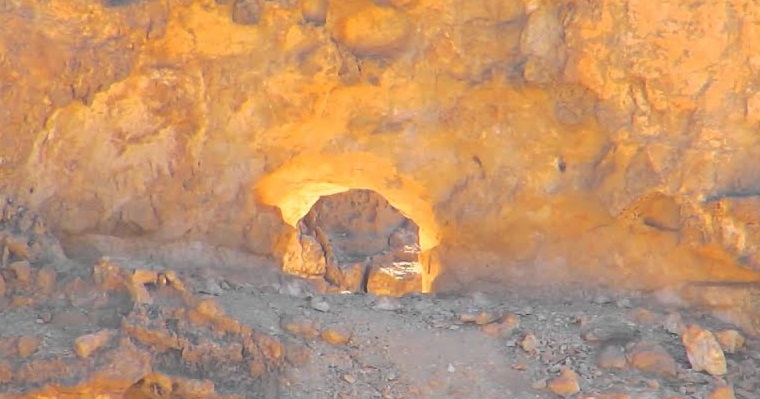
The window of light on Mount Karkom
In the southern Negev lies a mountain distinguished by an extraordinary concentration of stone sanctuaries, rock art, ancient altars, and Matzevot (small standing stones) dating back to the era of the Goddesses. Additionally, on one of the mountain’s encircling cliffs, a remarkable phenomenon was recently identified by Yigal Granot. On the year’s shortest day, during mid-afternoon, a window of enigmatic light emerges on the cliffs, as though a beam of light is being cast onto the rock walls from a colossal projector. This spectacle lasts for approximately two hours and occurs for about two weeks, both before and after the winter solstice.
The light window phenomenon is the result of sunlight being refracted through a specifically carved opening in the cliff where it manifests. An intentional carving in the cliff alters the sunlight’s path, creating a luminous window during the year’s shortest days. Such occurrences undoubtedly left a profound impression on ancient observers, but more significantly, they reveal insights into their beliefs. This light window reflects a faith in shamanic experiences, alterations in states of consciousness, transitions between dimensions, and symbolizes a portal to another reality during this specific time. Moreover, this phenomenon corroborates that ancient peoples indeed witnessed and revered light phenomena in nature, as described by Paul Devereaux, recognizing them as significant spiritual or metaphysical events.
The window of light, positioned directly in front of the path leading up the mountain, acts as an announcement of the potential to connect with other dimensions at this location. The rocks upon which this phenomenon occurs were likely viewed as a site of divine revelation, a nexus for transition between the tangible world and the realm beyond, much like the entire sacred mountain itself. Ascending this mountain imparts a sensation distinct from that at its base, akin to stepping into another realm, a feeling unanticipated from the mountain’s foot. The contrast between being at the base and reaching the plateaus above is stark, seemingly embodying a shift between two levels of consciousness or awareness. One level is the physical, earthly realm, while the other is the spiritual domain. While every mountain may symbolize a connection between these planes (axis mundi), Mount Karkom, with its unique terrain and the enigmatic window of light that greets those ascending, accentuates this symbolism profoundly.
Many Megalithic sites are intentionally oriented to align with the sunrise or sunset on the shortest day of the year, a day regarded as particularly auspicious for connecting with the cosmos. At numerous sites, this alignment results in the phenomenon of light penetrating into dark chambers or a stone circle on this significant day. Meanwhile, the light window on Mount Karkom stands out as a distinctive manifestation, observable from afar and unique in its appearance. This window represents a phenomenon unmatched anywhere else in the world.
The sacred sites on the Mountain primarily date back to the Chalcolithic period. However, the mountain’s excavator, Prof. Anati, discovered at its peak a complex comprising 40 large flint stones, constituting a sacred site from as early as 30,000 years ago. If accurate, this could be the oldest Megalithic complex in Israel, perhaps even worldwide. The Mountain features two distinct types of stones: flint, whose formation process remains a mystery, and local limestone. Regardless of one’s beliefs about the energetic properties of stones, the sensation flint stone imparts distinctly differs from that of limestone. Mount Karkom is noted for its high-quality flint stone surfaces. In ancient times, flint played a crucial role; it was essential for fire-starting and tool-making, regarded as a divine gift worthy of gratitude. This reverence for flint likely contributed to the Mountain’s sanctity, attracting ancient peoples to gather its precious flint.
For various reasons, Mount Karkom emerged as a pilgrimage destination for people from across Israel as far back as the era of cave dwellers, with its significance notably increasing during the Chalcolithic period. This era witnessed the largest proliferation of ancient rock art in the region on Mount Karkom, featuring depictions of ibexes, humans, geometric symbols, and dotted points that suggest shamanic trance experiences. Prof. Anati, whose theories have sparked debate, posits that Mount Karkom is actually the biblical Mount Sinai. According to his hypothesis, the Israelites, having departed from Egypt, arrived at this site significantly earlier than traditionally believed, around the 3rd millennium BC.
Regardless of whether Mount Karkom is identified as Mount Sinai, it is indisputable that this mountain has been regarded as a sacred site by desert dwellers for thousands of years. It’s important to note that accessing the mountain is challenging, requiring an off-road jeep and the guidance of someone familiar with the terrain to reach it.
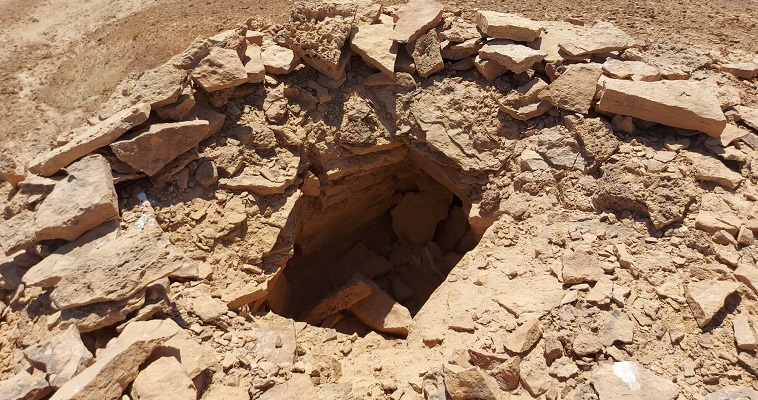
Matzevots in the Negev
Relatively few are aware that the Negev is home to the world’s oldest dated standing stones, dating back 11,000 years. While they might be referred to as Menhirs in other contexts, they are commonly known as Matzevot in this region. The Matzevot tend to be smaller than their European counterparts, possibly due to the absence of trees in the desert, which means there’s nothing to obstruct their visibility, allowing them to be noticed even though they are smaller.
The Matzevot are categorized into two distinct types: one being a narrow and tall standing stone symbolizing the male principle, and the other a square and flat stone lying on the ground, representing the female principle. These stones were intentionally left in their natural state, with chiseling done in only a few instances, despite the availability of technology to shape them at the time. The preference to preserve the stones’ natural form was rooted in religious beliefs. The tradition of erecting standing stones has a long history in the desert, extending for thousands of years before spreading to the cultivated lands of Israel, where it persisted up to the biblical era, with such sacred stones referred to as “Matzevot”.
The Matzevot, or standing stones, are typically arranged in odd-numbered groups: 3, 5, 7, and occasionally are found standing alone. In over half of these instances, they are oriented towards the east, and they are sometimes encircled by a semi-circle marked on the ground with smaller stones. Commonly found nearby are offering benches, altars, basins, sacred items, decorations made from shells, and more. The height of the Matzevot ranges from a few centimeters to several meters, with many standing as tall as an adult. The regions of the Negev and East Sinai boast the highest concentration of Matzevot. Interestingly, some of these Matzevot are stones that have been transported from faraway locations.
At the summit of Maale Jethro in the Uvda Valley, there exists a notable sacred site from the era of the Goddess, comprising 7 standing stones, each up to 1 meter in height. This setup echoes the 7 stones found at Atlit Yam and the 7 stones of Tel Gezer. Positioned to the east, in front of these stones, lies a flat stone strategically placed at the central Matzeva’s feet, functioning as an offering table. Adjacent to this table, a copper pendant was unearthed, featuring a female fertility symbol—a triangle—engraved on it, serving as tangible proof of ancient Goddess worship at this site.
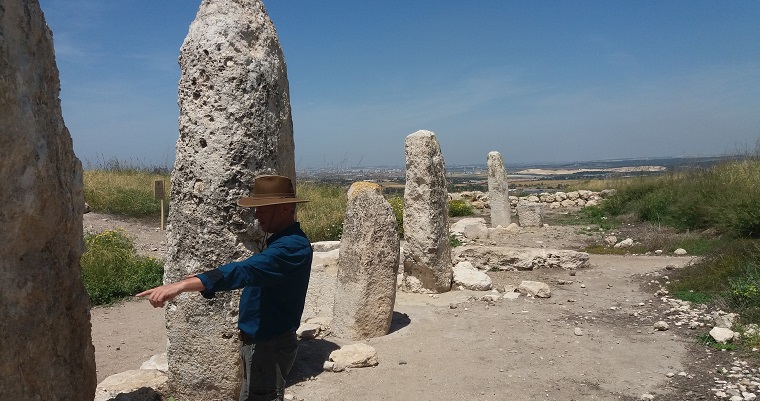
Menhir in Tel Gezer
Tel Gezer hosts the most striking collection of standing stones in Israel, known as the “Temple of Matzevot.” This assembly of 10 monumental stones was erected around 4,000 years ago, when Gezer was among the country’s most prominent cities and served as a center for Canaanite religious practices. However, the settlement at Gezer predates this period significantly, with evidence of human habitation from the era of the Goddess. It’s conceivable that these standing stones were components of an earlier structure and were subsequently repositioned during the Canaanite period to their current location.
The “Temple of Matzevot” features 10 large rocks aligned in a continuous row, with the most massive among them weighing several tons and standing over 3 meters tall. Each stone is polished on one side and left rough on the other, all oriented towards the sunset on the shortest day of the year. Gaps are present in the row after the second and seventh stones, distinguishing the arrangement. Notably, the seventh stone is unique compared to the rest; it is crafted from a harder material sourced from the Jerusalem area.
Professor Paton [1] notes that the second stone in the sequence stands out due to its smaller size, pointed shape, and distinct appearance: it shows clear signs of having been intentionally cut and shaped, as well as indications of frequent handling. This particular stone holds a special sanctity and predates the others in the row. According to Paton, it serves as a symbol of the mother Goddess—Asherah. Its conical shape is emblematic, typically representing the breasts of a woman, and is a traditional representation of feminine divinity.
The third and eighth stones within the “Temple of Matzevot” exhibit depressions, resembling small cups, engraved on their vertical surfaces. These were created by rotating a hard stone against the softer rock, a characteristic often found at sacred sites associated with Goddess culture. The placement of these cups on the vertical side of the stones indicates their use in ceremonial activities. Adjacent to the sixth and seventh stones lies a square altar featuring a water trough, which Paton interprets as having been utilized for offerings and sacrifices. McAllister, who was among the first to excavate the site, proposed that this structure served as the base for a wooden pillar sacred to the Goddess Asherah, highlighting its religious significance.
To the south of the stones, there’s a significant rock surface inscribed with 83 cup marks, varying in diameter from a few centimeters to one or two meters. Beneath this carved surface, three unique caves were discovered, accessible through a narrow passage emerging from the bottom of one of the larger depressions (cups). The first cave functioned as a container for liquids, which were channeled into it via the depression. An extraordinary accumulation of pig bones was found inside this cave, indicating its use in specific practices or rituals.
Paton interprets the round depressions (cups) carved into the rock and on the standing stones as symbolic representations of the Mother Goddess, for whom the pig was considered a sacred animal. He suggests that the presence of a cave is indicative of sites revered in Goddess worship and posits that these features are significantly older than the standing stones themselves. This leads to the possibility that the site had been sacred to Goddess worship since prehistoric times, potentially even dating back to the era of cave dwellers.
Sara Lee Gardner, who also studied the site [2], concurs with the notion that the area held sacred significance well before the erection of the standing stones. She points out that beneath the stones, a layer of lime dating back to 2900 BC was uncovered, indicating that the site functioned as a place of sacred worship approximately 1,300 years prior to the placement of the large megaliths. Beneath this lime layer, a substantial burial Megalith was found, which might have served as a focal point for worship during that era.
Gardner reveals that wall paintings found in one of the nearby caves depict the configuration of the standing stones, suggesting that the Temple of Matzevot may have been a site of worship as far back as 5,000 years ago, if not earlier. Prior to the erection of the stone megaliths, wooden poles might have been positioned in the ground following the same arrangement, a practice observed at Megalithic sites globally. For instance, at Stonehenge, there is evidence of a preliminary phase featuring wooden poles dated about 1,000 years before the stones were placed. These poles and stones served a similar purpose: to facilitate astronomical observations.
Gardner demonstrated that the shadow cast by the fifth stone at sunrise on the shortest day of the year perfectly aligns with the side of the altar, while the shadow of the sixth stone at sunrise on the longest day of the year precisely covers the water trough within the altar. This alignment suggests that the altar was deliberately designed to match the shadows of the fifth and sixth stones during the sunrise of the year’s shortest and longest days, respectively. The altar thus serves to mirror the celestial cycle of darkness overtaking and the subsequent renewal of light. The covering of the altar’s side by the shadow on the shortest day symbolizes a period of closure and restriction, whereas the shadow over the water trough on the longest day represents openness and receptivity. Furthermore, Gardner illustrated that the third stone is accurately aligned with the sunrise on the equinox day, reinforcing the site’s astronomical and cosmological significance.
It’s noteworthy that up until the 1930s, a Megalithic complex of large standing stones existed near Tel Lachish, bearing some resemblance to the one at Tel Gezer [3]. Although only photographs remain, with no physical traces left on-site, it underscores the existence of a widespread network of Megalithic structures across Israel, mirroring those found in England, France, Spain, and other countries. Only in recent years has there been a growing recognition and appreciation of this rich and intriguing aspect of human history.
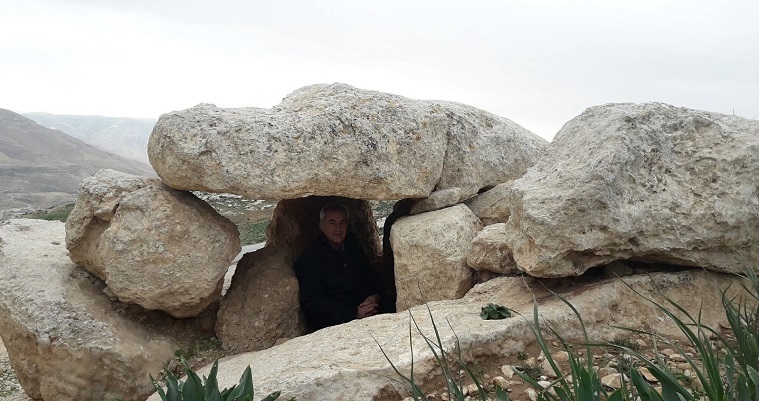
End Notes
[1] Paton, L. B. (1910). The Cult of the Mother-Goddess in Ancient Palestine. The Biblical World, 36(1), 26-38
[2] Gardner, S. L. (2002). The sun, moon and stars of the southern Levant at Gezer and Megiddo: Cultural astronomy in Chalcolithic/Early and Middle Bronze Ages. The University of Arizona.
[3] Freikman, M., & Nagorskaya, A. (2017). Megalithic Architecture in Judea and the ShephGoddess: New Evidence from Kfar Uriyya and Nahal Timna. STRATA: Bulletin of the Anglo-Israel Archaeological Society, 3




